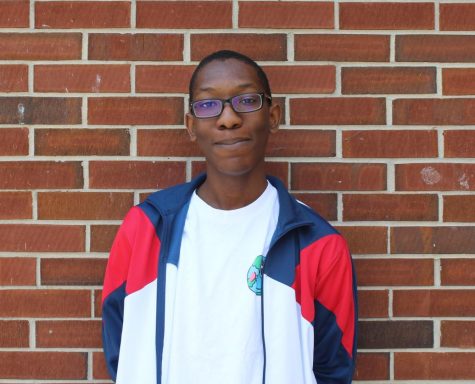Joke’s on you: debunking the Joker controversy
November 21, 2019
Nothing satisfies the Joker more than inciting controversy: within the DC Universe, he served as the catalyst for the conflict in the Injustice series which tore Earth’s heroes apart. This infamy extends to the real world as well, best represented by his controversial relationship with Harley Quinn, as well as DC pulling the controversial cover to Batgirl #41 in 2015; and like history repeating itself, the Clown Prince of Crime finds himself in his biggest controversy yet.
The first solo film starring the character finds itself mired in controversy: figures in the entertainment and news industry believe the film wants viewers to sympathize with mass murders and “incels”, and see it as a potential inspiration for future mass shootings.
However, if produced during the time period set in Joker, the public may react differently. Set in the early 1980s, the film could present an issue current to those times, considering the crime rates at that time as well as in the film. Since this period, ideals expanded as the middle class blossomed and people evolved to think past the class structures within society. A downward spike of the middle class starting in the ’70s and increasing in the ’80s could represent a cause, with that topic forming the backbone of Joker’s social commentary.
This fact further extenuates the rich versus the poor aspect found within the film, highlighting ideas that existed within the “poor people’s” minds, or the rioters with the film. Inequality within income highlights the rich versus poor idea portrayed within Joker. In the film, the riots on the streets and the random killings seemed to exist as mostly men in clown masks, the idea of inequality pushing the movement.
The film winning the Golden Lion at the Venice Film Festival sparked further debate about the film glamorizing its themes. Eventually, Warner Brothers released a statement in defense of the film and revoked journalists’ access to the film’s U.S. premiere.
All to say not everyone likes the film. However, a closer look proves the media completely wrong, and yet their commentary plays into the exact sentiments Joker warns against.
To start, the issues of the film promoting violence and mass shootings find themselves greatly overblown in the 21st century, making claims that link the Joker’s villainous acts to those of mass shooters. In all fairness, mass shootings in the U.S. deserve major attention; even more so considering the tragic 2012 shooting that took place during a screening of The Dark Knight Rises, where the shooter dressed up as and referred to himself as the Joker. But the argument Time’s Stephanie Zacharek makes, that the film glorifies portrays violence as “energizing and fun”, only spreads misinformation about the film.
A study done by the National Council involving mass violence within the United States portrays a major peak in the number of murders done in 1979-1982 on a graph from 1960-2017 (14). Further extenuating the differences between the 2000s and the 1980s, gives more weight to how people may have responded to the mass violence found within Joker.
“…Research suggests that inequality raises the stakes of fights for status among men,” The Guardian writer, Maia Svalavitz said.
Joker only uses a gun twice: once near the 35-minute mark and again at the end. Guns themselves hold little symbolism in the film aside from granting Arthur a defense against the world, something not exactly exclusive to the world of film. The film also goes out of its way to show Fleck as unskilled with guns, as he carelessly carries one to work and gets fired. The same sentiment applies to the film “promoting violence”: only 4 scenes portray “graphic violence”, and their cinematography and music show them as nothing besides disturbing acts committed by a man abused but undoubtedly in the wrong. The idea that people received from the Joker’s killings prompted the social change, almost like the spark to light the flame. He did not intend to set this revolution of violence in motion, but it happened because the minds of the people of Gotham already conveyed that intent.
The Joker laments his circumstances but still uses resources available to him: he attends therapy regularly, actively takes medication, and only stops due to circumstances out of his control. Like Loki in the Thor and Avengers films, both villains fell victim to a neglectful society that turned them into exactly what tormented them.
That above all else represents the true meaning of Joker. Despite all the memes & jokes made about how “we live in a society”, the film’s actually about how society fails people like the Joker, namely its institutions and its elite represented by Thomas Wayne; but to act like only those to contribute to Arthur’s fall misses the entire part of the film. The everyday people Arthur found it easier to ignore or outright mock Arthur’s issues than to at least try and show compassion; does that sound familiar? As Arthur himself says, “Everybody just yells and screams at each other. Nobody thinks what it’s like to be the other guy.”
“Fleck becomes a symbol of Gotham rising up against the upper class in their ivory towers and the sentiment of “Kill the Rich” sweeps through Gotham, culminating with the tragic consequences for the Wayne family that will someday turn Bruce Wayne into Batman,” Screenrant writer, John Orquiola said.
Quite frankly, the people who oppose Joker do so because it forces them to acknowledge how our society continues to fail the mentally ill, as well as holds up a light to their lack of compassion. Say what you will about director Todd Philips’ comments on “woke culture”, but the response to them proves how people refuse to talk anything out. Joker does not condone murdering those who bully others or promote mass shootings, at least in this time period. But it does ask viewers to try and understand why Arthur does what he does in the hopes of preventing this from happening, as well as why people in the film reacted to Arthur the way they did.







